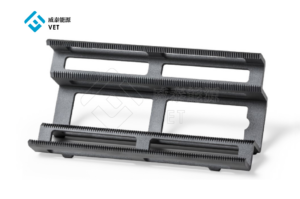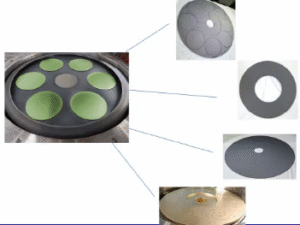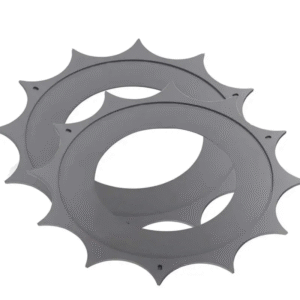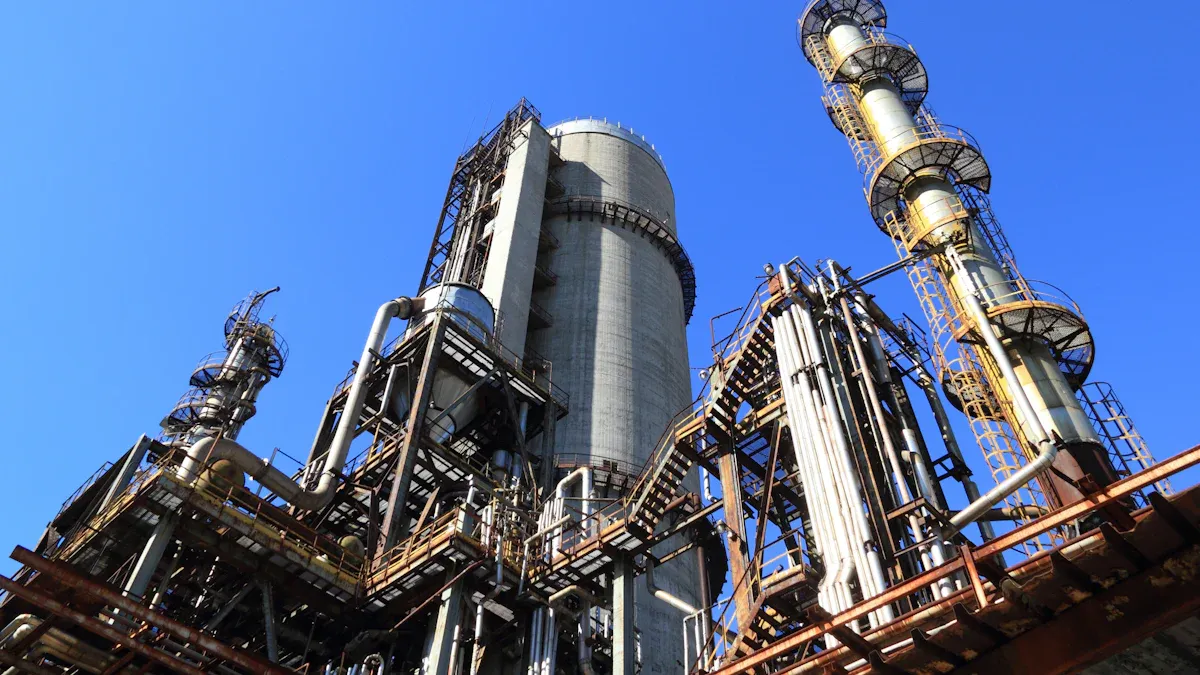
Corrosion in chemical processing environments poses significant operational challenges, with a global economic impact exceeding $2.5 trillion annually. The cutting-edge TAC Coating, featuring advanced CVD TAC COATING and reinforced by durable CVD SiC Layers, delivers exceptional protection and reliability. Its state-of-the-art design effectively mitigates chemical attacks, prolongs component lifespan, and lowers maintenance requirements. This revolutionary solution drives cost efficiency and promotes sustainable operations.
Key Takeaways
- TAC Coating protects equipment from rust in chemical processing. It lowers repair costs and makes machines last longer.
- Its special CVD technology forms a strong, smooth layer. This layer handles tough chemicals and very high heat.
- Using TAC Coating helps the environment by cutting waste. It uses safe materials and helps companies stay eco-friendly.
Understanding TAC Coating
What is TAC Coating?
TAC Coating represents a breakthrough in anti-corrosion technology, specifically designed to address the demanding conditions of chemical processing environments. It is a specialized coating system that combines advanced chemical vapor deposition (CVD) techniques with innovative material engineering. This coating forms a robust protective layer that shields equipment and surfaces from corrosive substances, high temperatures, and mechanical wear.
The development of TAC Coating focuses on enhancing the durability and performance of industrial components. By creating a seamless and uniform barrier, it prevents chemical reactions that lead to corrosion. This makes it an ideal solution for industries where traditional coatings fail to provide long-term protection. Ningbo VET Energy Technology Co., Ltd has been at the forefront of delivering this cutting-edge solution, ensuring reliability and efficiency for its clients.
Unique Properties of TAC Coating
TAC Coating stands out due to its exceptional properties, which set it apart from conventional anti-corrosion methods. These unique characteristics include:
- Superior Chemical Resistance: The coating effectively withstands exposure to aggressive chemicals, including acids, alkalis, and solvents, ensuring long-lasting protection.
- High-Temperature Tolerance: It maintains its structural integrity and performance even under extreme heat, making it suitable for high-temperature applications.
- Enhanced Mechanical Strength: The coating resists physical damage such as abrasion and impact, reducing the risk of wear and tear.
- Seamless Application: The advanced CVD process ensures a uniform and defect-free coating, eliminating weak points that could compromise protection.
- Eco-Friendly Composition: TAC Coating is designed with sustainability in mind, utilizing materials and processes that minimize environmental impact.
These properties make TAC Coating a game-changer for chemical processing industries. Its ability to deliver unmatched protection and performance ensures that equipment operates efficiently and reliably, even in the harshest conditions.
Challenges with Traditional Anti-Corrosion Methods
Limitations of Conventional Coatings
Traditional anti-corrosion coatings often fail to meet the rigorous demands of chemical processing environments. Their limitations stem from inconsistencies in chemical composition, application techniques, and environmental compatibility. These shortcomings compromise their ability to provide reliable, long-term protection.
| Limitation/Challenge | Description |
|---|---|
| Chemical Structure Variability | Variability from extraction methods leads to inconsistent coating performance. |
| Uniform Dispersion | Difficulty in achieving uniform dispersion affects adhesion and protection. |
| Mechanical Property Compromise | Integrating materials without compromising mechanical properties is complex. |
| Adhesion | Need for improved adhesion to substrates for better performance. |
| Environmental Concerns | Growing concerns have made some traditional coatings obsolete. |
These challenges highlight the need for innovation in anti-corrosion technology. Conventional coatings often degrade under extreme temperatures or exposure to aggressive chemicals, leading to frequent maintenance and higher operational costs.
Why Chemical Processing Requires Advanced Solutions
Chemical processing environments demand coatings that can withstand harsh conditions while maintaining operational efficiency. Industries have long relied on advanced materials to combat corrosion, but the growing complexity of chemical processes has exposed the limitations of traditional solutions.
- Mar-Bal’s composite materials, used since the 1940s, demonstrate durability in corrosive environments. Field tests on a 25-year-old gasoline storage tank revealed no damage, proving their effectiveness.
- ChemLINE® coatings, specifically designed for chemical processing, showcase superior performance in preventing corrosion. Case studies confirm their reliability in maintaining operational integrity under extreme conditions.
These examples underscore the importance of adopting advanced solutions like TAC Coating. Its innovative design addresses the limitations of conventional coatings, ensuring durability, cost-effectiveness, and environmental sustainability.
How TAC Coating Works
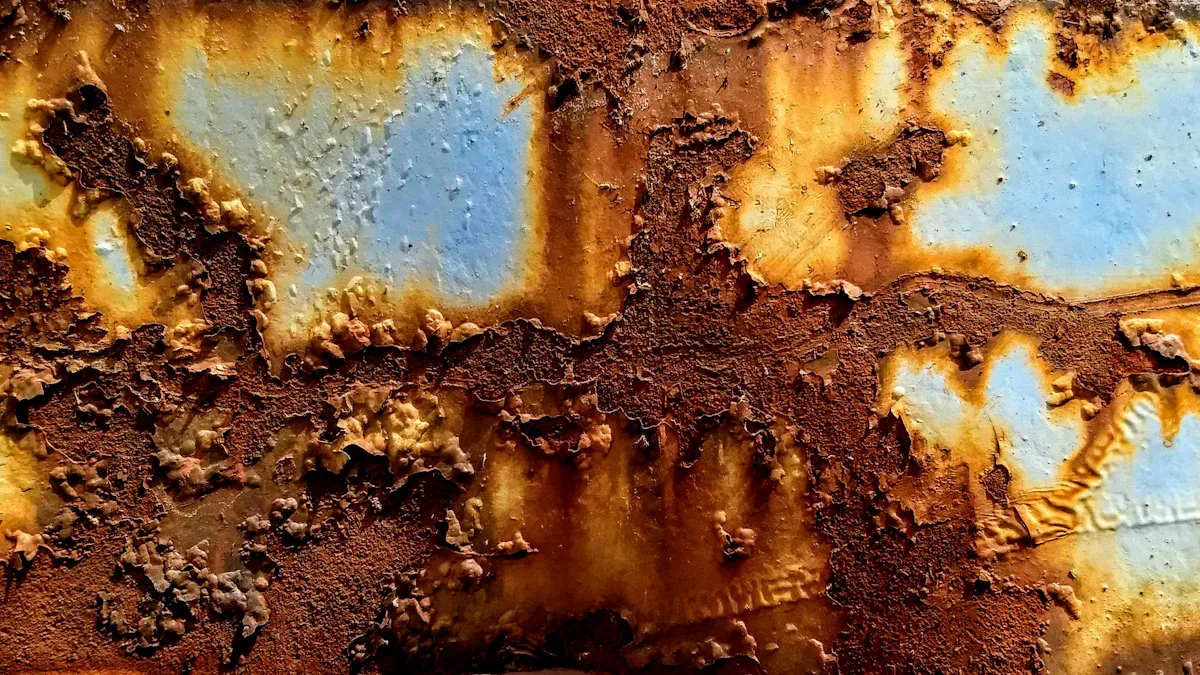
The Science Behind TAC Coating
TAC Coating employs advanced material science to deliver unparalleled resistance to corrosion. Its foundation lies in the integration of ultra-high-temperature ceramics (UHTC) with carbon-carbon (C/C) composites. This combination enhances the coating’s ability to withstand chemical attacks and extreme environmental conditions. Comparative studies reveal that C/C-UHTC composites exhibit significantly higher ablation resistance than standard C/C composites, making them ideal for demanding applications.
| Composite Type | Ablation Resistance |
|---|---|
| C/C | Lower |
| C/C-UHTC | Significantly Higher |
The coating’s chemical vapor deposition (CVD) process ensures a uniform and defect-free layer. This seamless application eliminates weak points, preventing corrosive agents from penetrating the surface. By leveraging these scientific advancements, TAC Coating provides a robust solution for industries requiring long-term durability and reliability.
Application Techniques and Technology
The application of TAC Coating involves precise techniques and cutting-edge technology to meet stringent industrial requirements. The process begins with the preparation of the substrate, ensuring optimal adhesion and performance. Specialized CVD equipment deposits the coating layer, achieving uniform thickness and superior bonding.
Technical documentation highlights key requirements for successful application:
| Requirement | Description |
|---|---|
| Specialty Coating | A coating that meets additional performance criteria, such as temperature resistance and enhanced corrosion protection. |
| Recordkeeping | Material data sheets document VOC content, composition, and compliance details. |
| Vapor Control System | Facilities must install monitors to ensure proper functioning of vapor control systems. |
These meticulous techniques ensure that TAC Coating delivers consistent results across various applications. Ningbo VET Energy Technology Co., Ltd employs these advanced methods to provide clients with reliable and efficient anti-corrosion solutions.
Benefits of TAC Coating in Chemical Processing
Enhanced Durability and Longevity
TAC Coating offers unmatched durability and longevity, making it a preferred choice for chemical processing industries. Its advanced composition, featuring tantalum carbide (TaC), provides exceptional hardness and resistance to extreme conditions. This coating withstands temperatures exceeding 3,800°C, ensuring reliable performance in high-temperature environments.
- Key Performance Metrics:
- Exceptional hardness and wear resistance extend the lifespan of coated components.
- High melting point ensures stability under extreme heat.
- Resistance to chemicals like ammonia (NH₃), hydrogen (H₂), and hydrogen chloride (HCl) prevents degradation.
- Protective barriers enhance mechanical strength and contamination prevention.
Industries such as aerospace and high-temperature manufacturing have already adopted this technology to improve operational efficiency. By reducing wear and tear, TAC Coating minimizes the need for frequent replacements, ensuring uninterrupted operations in demanding environments.
Cost-Effectiveness and Reduced Maintenance
The cost-effectiveness of TAC Coating lies in its ability to reduce maintenance frequency and long-term expenses. While the initial investment may be higher than low-quality coatings, the long-term savings are substantial. The following table highlights the cost-benefit analysis:
| Coating Type | Initial Cost | Maintenance Frequency | Long-Term Cost |
|---|---|---|---|
| Low-Quality Coating | Low | High | High |
| High-Quality Coating | Moderate | Low | Low |
TAC Coating falls into the high-quality category, offering significant savings over time. Its durability reduces the need for frequent repairs, lowering operational downtime and maintenance costs. This makes it an ideal solution for industries seeking to optimize their budgets without compromising performance.
Environmental Advantages of TAC Coating
TAC Coating not only enhances performance but also aligns with environmental sustainability goals. Its eco-friendly composition and application process minimize the environmental impact. Unlike traditional coatings, which often contain harmful chemicals, TAC Coating uses materials that are safer for both workers and the environment.
Tip: By reducing the frequency of maintenance and replacements, TAC Coating helps industries lower their carbon footprint.
Additionally, the coating’s long lifespan reduces waste generation, contributing to a more sustainable industrial ecosystem. Companies adopting TAC Coating demonstrate their commitment to environmental responsibility while benefiting from its superior performance.
Real-World Applications of TAC Coating
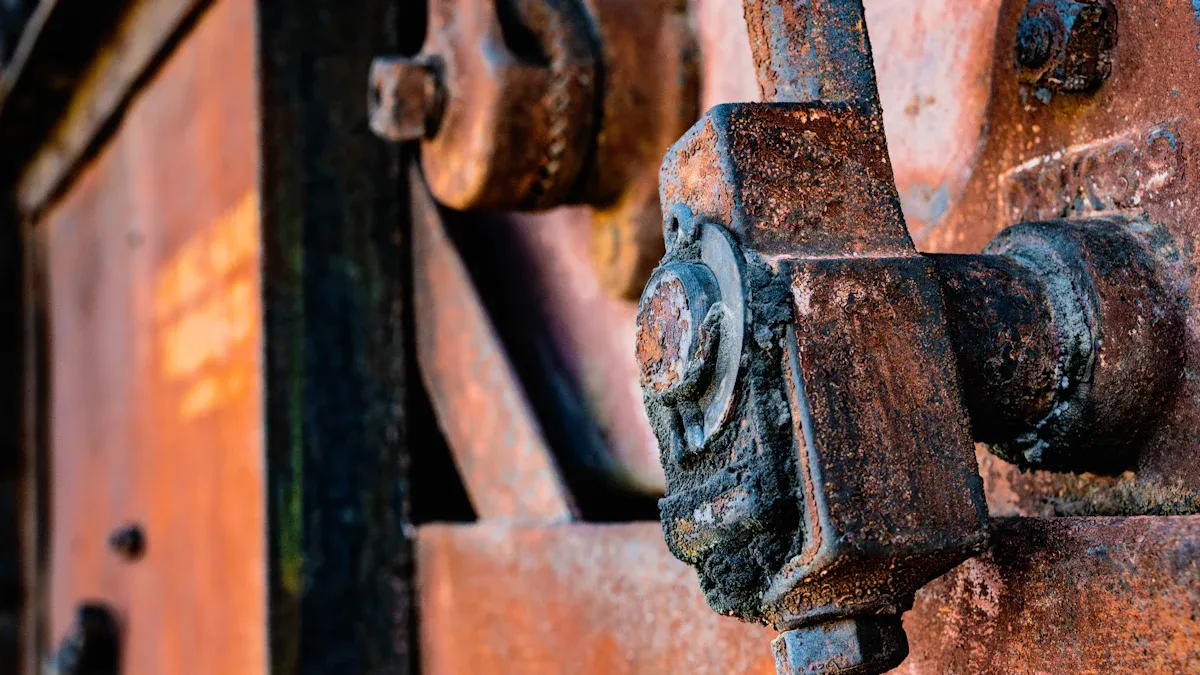
Industries Leveraging TAC Coating
TAC Coating has become a cornerstone in industries where corrosion resistance is critical. Chemical processing plants rely on this advanced coating to protect reactors, pipelines, and storage tanks from aggressive chemicals. The aerospace sector benefits from its ability to withstand extreme temperatures and mechanical stress, ensuring the longevity of critical components. Semiconductor manufacturing facilities also utilize TAC Coating to safeguard equipment exposed to corrosive gases during production processes.
Power generation facilities, particularly those using renewable energy, have adopted TAC Coating to enhance the durability of turbines and other high-performance machinery. Pharmaceutical companies leverage its chemical resistance to maintain the integrity of production equipment. These industries demonstrate the versatility and reliability of TAC Coating in addressing diverse operational challenges.
Success Stories and Case Studies
Several real-world applications highlight the transformative impact of TAC Coating. A leading chemical processing company reported a 40% reduction in maintenance costs after applying TAC Coating to its heat exchangers. The coating’s superior durability minimized downtime and extended the lifespan of critical equipment.
In the aerospace industry, a major manufacturer integrated TAC Coating into its turbine blades. The result was a significant improvement in thermal resistance, enabling the turbines to operate efficiently under extreme conditions. Similarly, a semiconductor company achieved higher production yields by using TAC Coating to protect its etching chambers from corrosive gases.
These success stories underscore the value of TAC Coating in enhancing operational efficiency and reducing costs across various industries. Ningbo VET Energy Technology Co., Ltd continues to support these advancements by delivering high-quality solutions tailored to specific industrial needs.
TAC Coating redefines anti-corrosion protection with its advanced durability, chemical resistance, and eco-friendly design. Industries benefit from reduced maintenance costs, extended equipment lifespan, and improved operational efficiency.
Note: Ningbo VET Energy Technology Co., Ltd delivers this innovative solution, ensuring reliability and performance. Explore TAC Coating to transform chemical processing operations and achieve sustainable success.
FAQ
What makes TAC Coating different from traditional anti-corrosion methods?
TAC Coating uses advanced CVD technology to create a seamless, defect-free layer. Its superior chemical resistance and high-temperature tolerance outperform conventional coatings in harsh environments.
Can TAC Coating be applied to all types of industrial equipment?
Yes, TAC Coating adapts to various substrates, including metals and composites. Its versatile application ensures protection for reactors, pipelines, and high-performance machinery.
How does TAC Coating contribute to environmental sustainability?
TAC Coating minimizes waste by extending equipment lifespan. Its eco-friendly composition reduces harmful emissions, supporting industries in achieving their sustainability goals.


